Every now and then an interesting figure comes along of seemingly unknown origin. This is often the case with figures from China and Japan, the former of which are often referred to as ‘Chinamals’. Such appeared to be the case recently when forum member Kikimalou posted an interesting figure of a pygmy spiny-tailed skink on the STS forum. In snooping around, I found multiple sellers of this peculiar lizard on eBay, Etsy, and multiple sites out of Asia. I contacted one of the eBay dealers and it turns out it was made in their factory (Shantou Yixinsheng Toys Co., Ltd). I did some more snooping around and found many similar factories which appear to produce a lot of the same sculpts. So essentially, the ‘manufacturer’ of these figures can differ based on who is selling them, as the seller may represent a specific factory! Doing some additional research, it appears the original was a resin figure produced by a company called Animal Planet (not to be confused with the TV station or the line of toys associated with the station), that also sells figures under the brand Animal Heavenly Body (see next pic). I wonder if Animal Planet partnered with these various Chinese factories to produce affordable plastic versions of the expensive resin model, similar to how TNG partnered with some sculptors to make affordable plastic versions of otherwise expensive prehistoric animal models (the pic below was taken from an eBay listing that was selling the resin version for $134.98).

The southern pygmy spiny-tailed skink (Egernia depressa) is a species of skink endemic to Western Australia. It lives in open woodland, with a preference for mulga woodland (mulga is a species of Acacia), where it shelters in dead trees and fallen logs. They also occur on granite outcrops surrounded by mulga woodland. In 2011, E. depressa was determined to represent a complex of four species, based heavily on molecular but also morphological and geographical data. The southern population was represented by true E. depressa, and the new species described were E. eos (central population, Western Australia and Northern Territory), E. cygnitos (western population, Western Australia), and E. epsisolus (eastern population, Western Australia). In reading the original paper, the figure looks like the best options morphologically are E. depressa and E. eos, and I will take a conservative approach and go with the type species in the complex (besides the original Animal Planet model was advertised as E. depressa).
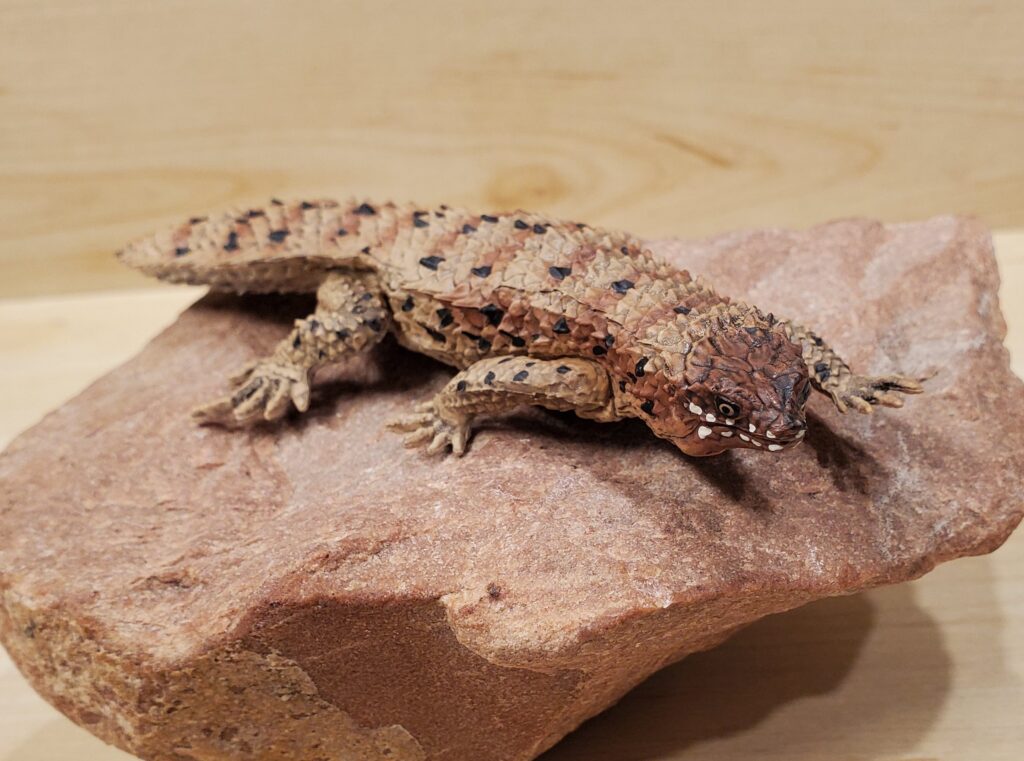
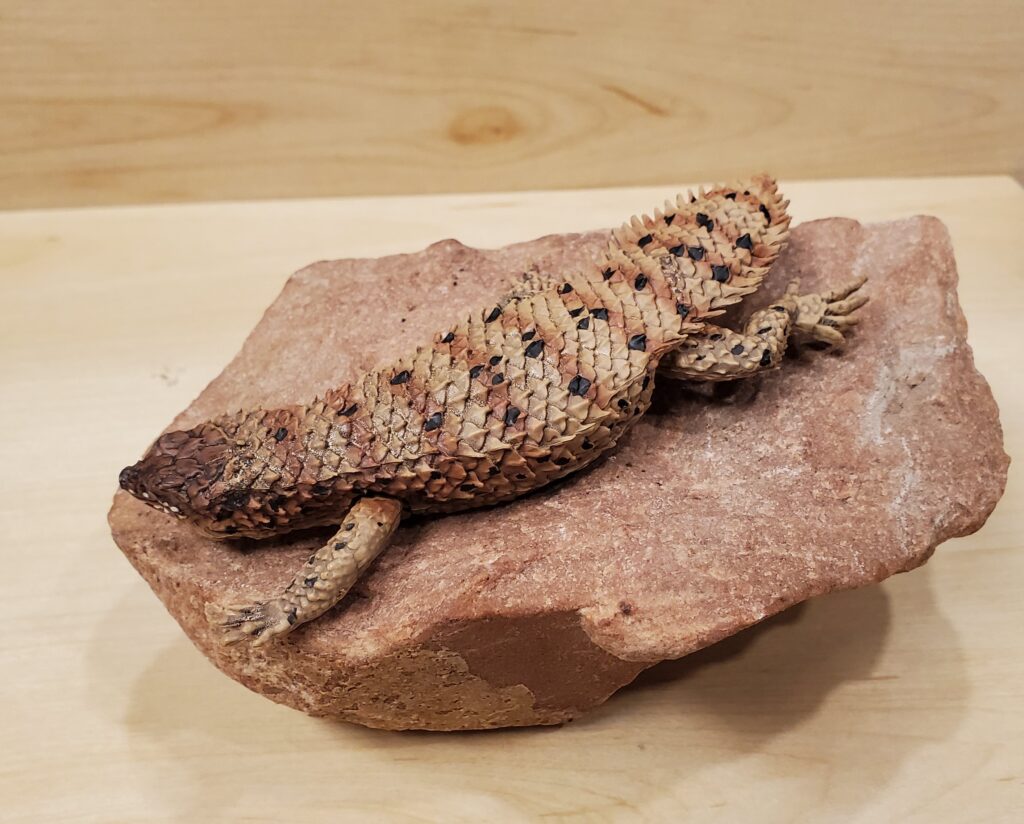
The figure is 12.5 cm across its widest dimensions. The snout-to-vent (SVL) length is approximately 8.5 cm, putting it within scale 1:1 for a smaller specimen or 1:1.3 scale for a maximum-sized specimen.
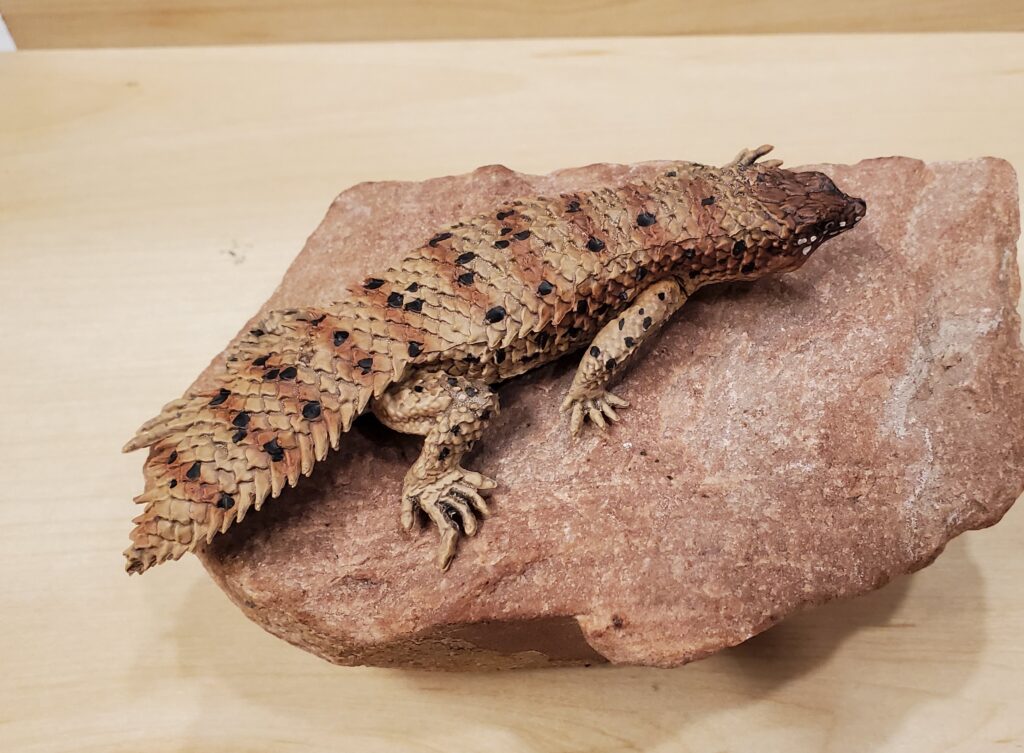
The sculpt is extremely detailed, and every scale appears to be sculpted. I actually wonder if the original was cast from an actual specimen! If not, kudos to the sculptor for doing an amazing job. The body is positioned as if in a gentle slow gait, ambling slightly to the animal’s right. Seams visible on the underside suggest it was assembled from at least three pieces.

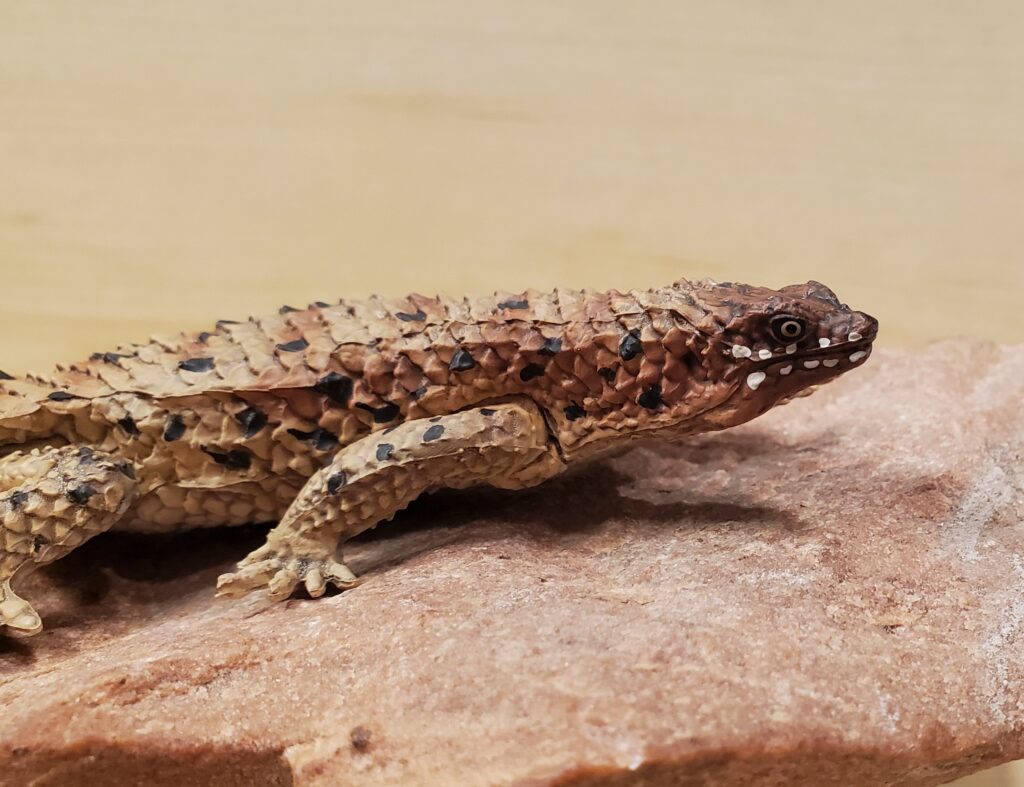
The paint is as good as the sculpt. The base color is a tan, with faint alternating orange-brown bands running down the body, with the dorsal surface of the head a slightly darker brown. Black maculae are painted dorsally on much of the body and legs, which lends support to the figure representing either E. depressa or E. eos. The scales around the mouth are painted white. The ventral surface is a cream color without maculae (ideally there should be some maculae ventrally, at least on the tail). The eye is a reddish-yellow (which is accurate) with a black pupil.
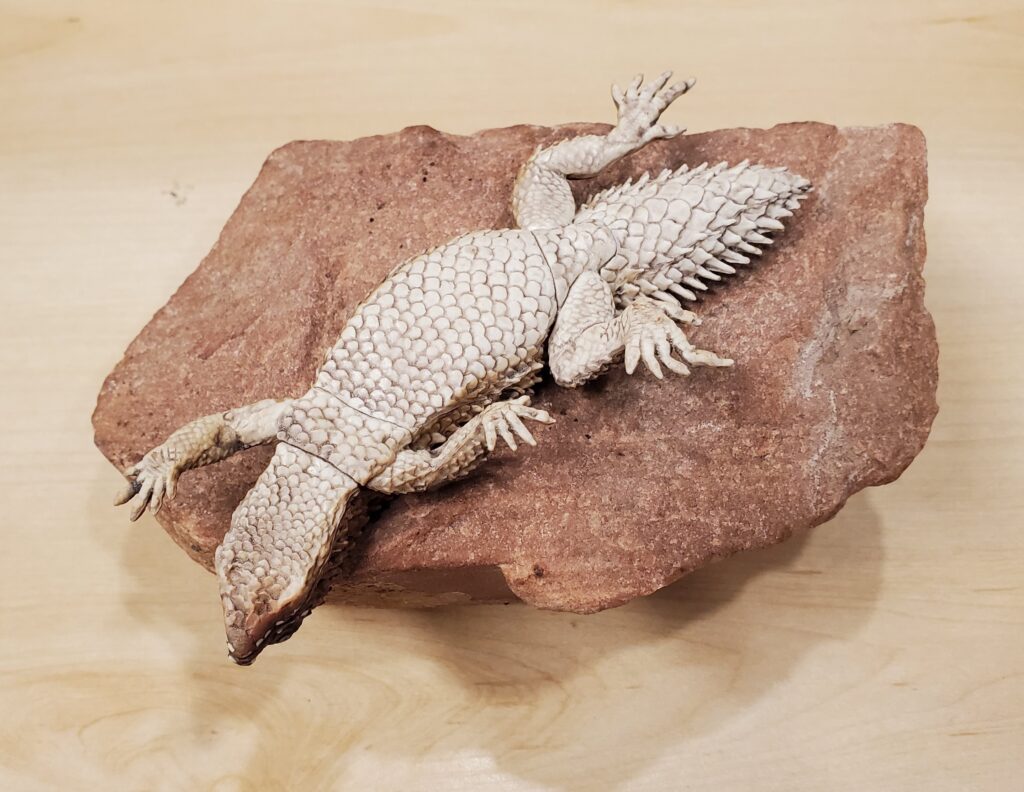
Overall this is an amazing figure of an unusual species of lizard. If one doesn’t mind cheaper (referring to cost) plastic versions of original resin models, this figure comes highly recommended to collectors of interesting taxa. The cheapest options I found came from Chinese eBay dealers, and the shipping didn’t take long (mine took about 2.5 weeks).

Disclaimer: links to Ebay and Amazon on the AnimalToyBlog are affiliate links, so we make a small commission if you use them. Thanks for supporting us!




Wow! That’s an excellent transition to toy form. The collectible market is full of hidden gems indeed!